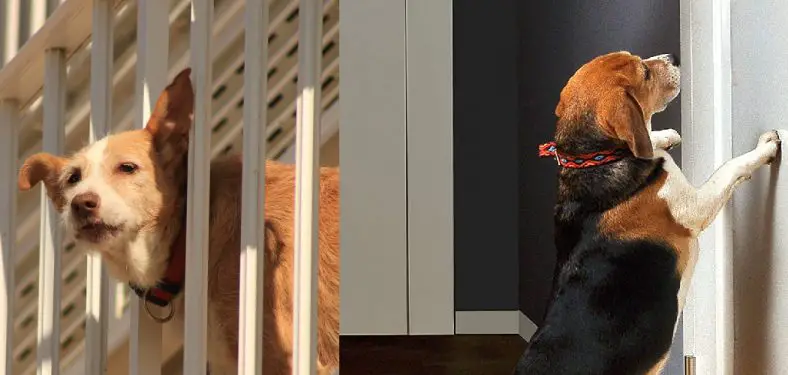Drywall is a popular material for home construction because it’s inexpensive and easy to install. But if you have a dog, you need to take extra steps to protect your drywall from being damaged by your pet. In this blog post, we’ll show you how to protect drywall from dog. Follow our tips, and your drywall will be safe from Fido’s sharp teeth!
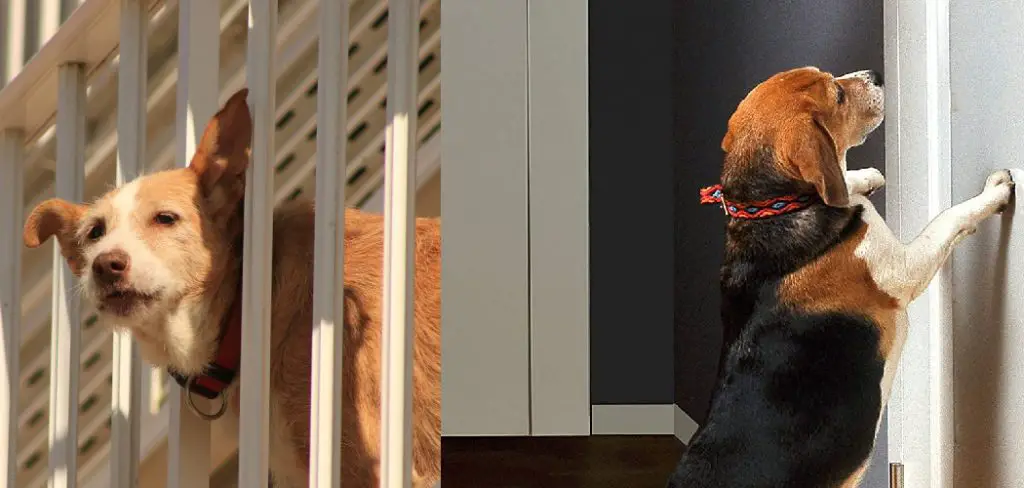
Contents
Why Is My Dog Eating My Drywall?
1. Boredom
If your dog is eating your drywall, it’s likely because he’s bored. Dogs are natural scavengers and eat just about anything they can get their paws on. So if you’re not providing your dog with enough stimulation and exercise, he may start to chew on things around the house out of boredom.
2. Health Issues
Several health issues can cause dogs to eat things they shouldn’t, including pancreatitis, liver disease, and intestinal blockages. If you suspect your dog may have a health issue causing him to eat your drywall, please take him to the vet.
3. Aggression And Anxiety
Some dogs may also chew on things out of aggression or anxiety. If your dog is always chewing on his toys but has started to chew on your drywall, it may be a sign that he’s feeling anxious or stressed.
4. Pain In Gums Or Teething
Dogs may also start to chew on things when in pain, such as when their gums are sore from teething. If your dog frequently cheers on his paws, gums, or other objects around the house, it’s worth checking his teeth to see if he’s teething.
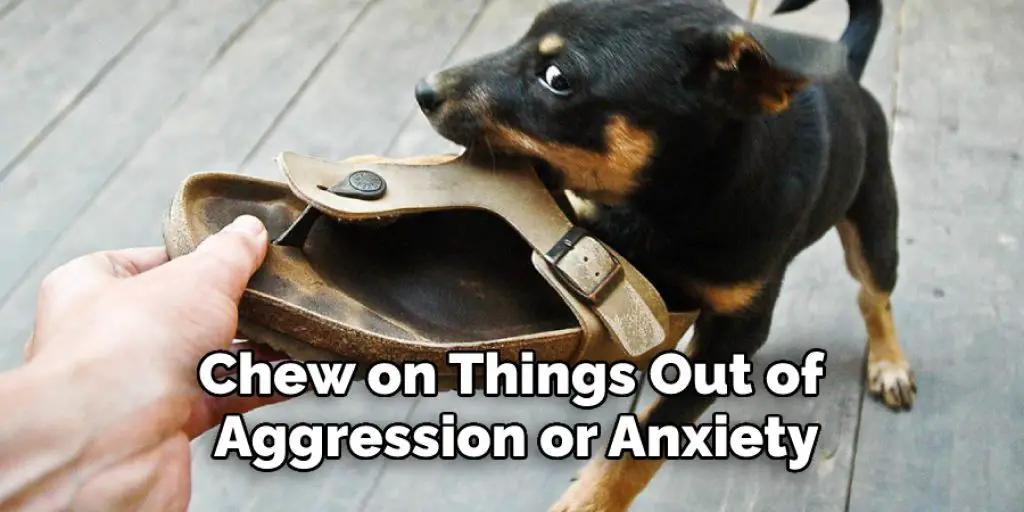
5. Lack Of Exercise
Dogs need a lot of exercises, and if they’re not getting it, they may start to chew on things around the house. A tired dog is a good dog, so make sure your pooch gets enough exercise.
6. Pica Symptoms
If your dog is eating things that he’s not supposed to, he may be suffering from pica, where dogs eat things that aren’t food. Pica can be caused by several things, including nutritional deficiencies, boredom, and anxiety. Please take your dog to the vet if you think your dog may have pica.
7. Lack Of Certain Nutrients In Dog’s Diet
Finally, a lack of certain nutrients in your dog’s diet can also cause him to start chewing on things. If you’re not sure if your dog is getting enough vitamins and minerals, talk to your vet about making sure he’s getting the right nutrients.
How to Protect Drywall from Dog Step by Step Guide
Step 1: Install Wall Shields For Pets
There are many different types of wall shields on the market that can protect your drywall from your pet. Most of these shields attach directly to the wall and will prevent your pet from being able to scratch or bite the drywall.
Step 2: Pour Smelly Detergent On Your Wall
Another way to protect your drywall from your pet is by pouring smelly detergent on the wall. This will help keep your pet from wanting to scratch or bite the wall.
Step 3: Pour Bitter Tasting Deterrents
There are a variety of bitter-tasting deterrents on the market that can be used to keep dogs away from drywall. One such product is called “Bitter Apple Spray.” It can be sprayed directly onto the surface of the drywall to create an unpleasant taste that will deter dogs from chewing. Be sure to reapply as needed, especially after rain or snow.
Step 4: Use Anti-Chew Sprays
There are a few different anti-chew sprays on the market that you can use to help protect your drywall from your dog. First, choose one made for dogs, and follow the directions on using it. Then, spray it along the baseboard of your walls, and anywhere your dog may be tempted to chew.
Some dogs may not like the taste or smell of the spray and will stop chewing in that area. However, if you have a persistent chewer, you may need to re-spray the area every few days. Keep any anti-chew sprays out of your dog’s reach, as they can be harmful if ingested.
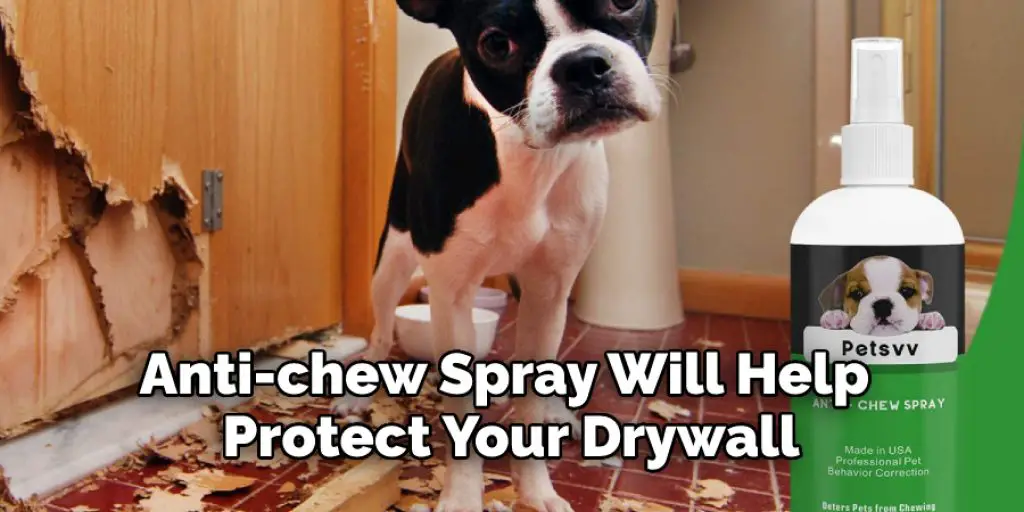
Step 5: Use Pet Corrector
Another way to protect your drywall from dog damage is to use a pet corrector. This device emits an ultrasonic noise that will startle your dog and deter them from biting or chewing on the wall. However, be sure to use this sparingly, as dogs can eventually become used to the noise, and it will lose its effectiveness.
Step 6: Paint Your Wall
Once you have your drywall mounted and all the repairs have been made, it is time to paint. Many people choose to paint their walls a different color than the ceiling, but that is up to you. The best way to protect your drywall from your dog is by using paint with a higher gloss.
Glossy paints are more difficult to scratch and will help to keep your walls looking new for longer. Be sure to use a quality paintbrush or roller when applying the paint to get an even coat. Let the paint dry completely before moving on to the next step.
Step 7: Train Up Your Dog
The best way to prevent your dog from damaging your drywall is to train it on how to behave. As with all things, prevention is key and will save you a lot of headaches down the road. Prevention starts with obedience training and housebreaking your pup. Once they know how to behave inside and outside the home, they are less likely to have any damage occur.
Step 8: Hide Drywall By Placing Furniture
Once you have completed the previous steps, your drywall should be well protected from your dog. However, if you want to ensure that your dog cannot damage the drywall, you can hide it by placing furniture in front of it. This will also help keep your dog from jumping up on the walls.
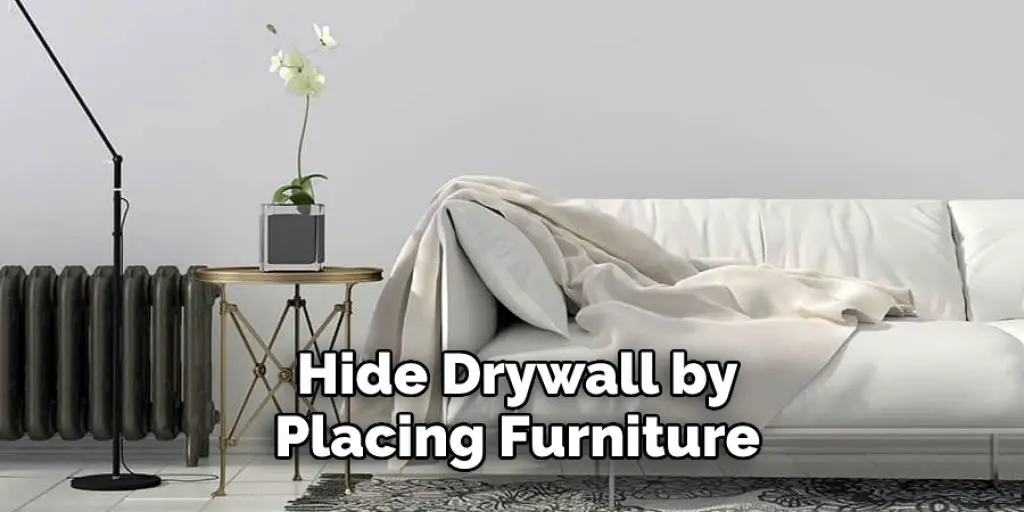
Step 9: Use Pet Toys And Chews
Chewing is a natural behavior for dogs and can help keep their teeth healthy. However, you don’t want them to chew on your drywall! Providing them with plenty of pet toys and chews will help redirect their chewing instinct to something more appropriate. There are many different dog toys available, so find ones that your pet likes and keep them entertained. You can also find edible chews that are made specifically for dogs. These are a great way to keep your dog’s teeth healthy and help prevent them from chewing on your drywall.
Step 10: Treat Boredom
Dogs are often bored when they’re left alone, which can lead to them chewing on things they shouldn’t. Ensure your dog has plenty of toys to keep them occupied, or take them for a walk every day. This will help reduce the amount of damage they do to your home.
Step 11: Puppies Will Stop Chewing After Teething
Along with chewing on your furniture, shoes, and other household items, puppies also like to chew on drywall. The good news is that this behavior usually stops after they have finished teething.
Step 12: Schedule Exercise Time For Your Dog
Dogs need exercise just like people do. If your dog isn’t getting enough exercise, it may be looking for something to do, including chewing on your drywall. Make sure you are giving your dog enough time outside or playing with them, so they don’t resort to destructive behavior.
Step 13: Get Your Dog Check By Vet
Dogs are prone to accidents and can easily damage your walls. If you have a dog, it is important to get them checked by a vet regularly to make sure they’re not hurting your home. Many health problems in dogs can be prevented by getting them checked by a vet regularly. Protecting your walls from your dog is one of the many benefits of regular vet checkups.
Step 14: Test Your Dog For Pica Symptoms
If you’re still unsure of how to protect your drywall from your dog, it may be time to take some steps to test for pica symptoms. Pica is a disorder that causes dogs to eat non-food items, and it can lead to problems like intestinal blockages, tooth damage, and even poisoning.
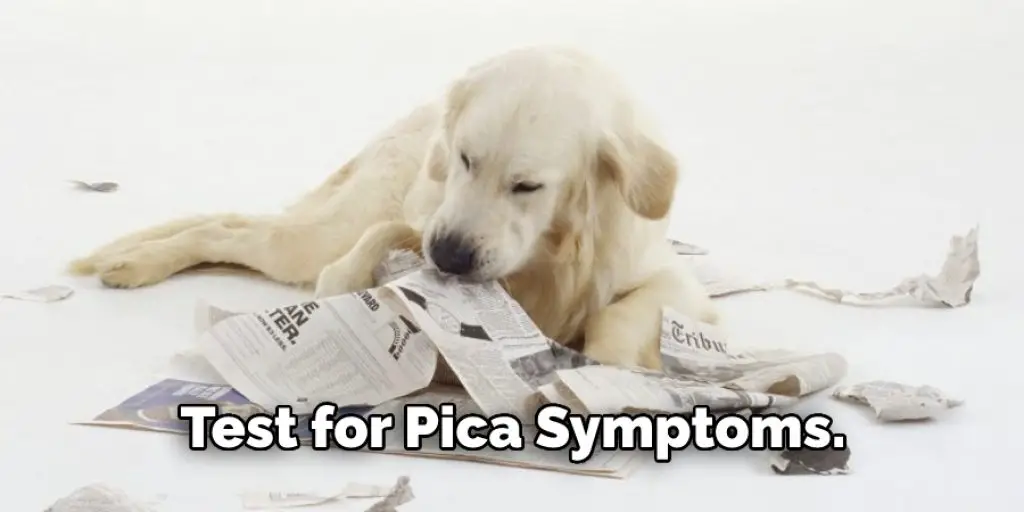
Now that you know how to protect drywall from dog, follow these tips to keep your home safe.
Should I Stop My Dog From Eating Drywall?
It is not recommended to stop your dog from eating drywall as it is a natural and healthy fiber source. However, if you are concerned about your dog eating drywall, there are a few things you can do to protect your drywall from damage.
First, keep your dog away from areas where the drywall is vulnerable, such as near the baseboard or in high-traffic areas. You can also try to puppy-proof your home by putting away any cords or wires that your dog might be interested in chewing on and using deterrents like bitter apple spray to keep them from gnawing on furniture or other household objects.
If your dog is already eating drywall, you can try to limit the damage by removing any loose pieces of drywall and repairing any holes or cracks. Finally, if your dog’s drywall-eating habit is causing significant damage, you may need to consider boarding them elsewhere until the problem is resolved. Keep reading for more information about how to protect drywall from dog.
Frequently Asked Question
Is Drywall Toxic for Dogs?
The answer to this question is not straightforward. While it is true that drywall can be toxic for dogs if ingested in large quantities, it is also important to keep in mind that different dogs will have different reactions to different substances.
Can Drywall Dust Make a Dog Sick?
Dogs are susceptible to respiratory problems from the inhalation of drywall dust. The tiny drywall particles can become lodged in a dog’s lungs and cause inflammation and other respiratory problems. It is important to protect your dog from breathing in the dust from drywall installation or demolition.
You Can Check it Out to Make a Dog House Out of a Plastic Barrel
Conclusion
There are a few ways to protect your drywall from your dog. One is to install a gate at the top of the stairs, so your dog can’t get up to the drywall. You can also put up a fence in front of the drywall or use a spray that will keep your dog away from it. Whichever method you choose, it’s important to protect your drywall from your dog, as they can easily damage it. Thanks for reading our post about how to protect drywall from dog.

